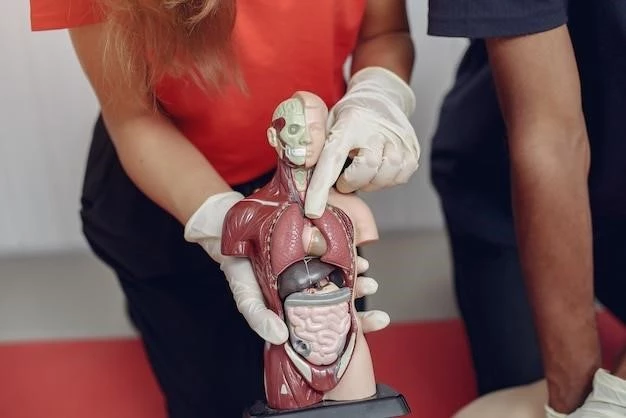Article Plan⁚ Disease — Myopathy with Lysis of Myofibrils
Introduction to Myopathy with Lysis of Myofibrils
Myofibrillar myopathy is a group of genetically diverse muscle disorders characterized by the dissolution of myofibrils, accumulation of degraded products, and abnormal protein expression. These conditions can present with progressive muscle weakness affecting daily life. Understanding the underlying pathophysiology and clinical manifestations is crucial for diagnosis and management. Consult with healthcare professionals for accurate assessment and personalized treatment plans.
Pathophysiology of Myopathy with Lysis of Myofibrils
The pathophysiology of myopathy with lysis of myofibrils involves a complex interplay of genetic mutations leading to the dissolution of myofibrils, accumulation of degraded products, and abnormal protein expression within muscle fibers. These cellular changes disrupt the normal structure and function of muscles, resulting in progressive weakness and impaired muscle contractions. Understanding the underlying molecular mechanisms driving this disease process is essential for developing targeted treatment strategies aimed at preserving muscle integrity and function.
Clinical Presentation and Symptoms
Patients with myopathy with lysis of myofibrils typically present with progressive muscle weakness affecting both proximal and distal muscles. Symptoms may include difficulty with mobility, muscle fatigue, and decreased muscle mass. As the condition advances, individuals may experience muscle atrophy, contractures, and respiratory difficulties. Seeking medical evaluation for comprehensive assessment and management is crucial in addressing the clinical manifestations and improving quality of life.
Diagnostic Approaches
Diagnosing myopathy with lysis of myofibrils typically involves a combination of clinical evaluation, imaging studies such as electromyography (EMG) to assess muscle function, and muscle biopsies for histological examination. Genetic testing plays a crucial role in identifying specific gene mutations associated with this condition. Consultation with specialists in neuromuscular disorders can help in confirming the diagnosis and guiding personalized treatment plans. Stay informed about the latest diagnostic modalities and seek expert guidance for accurate evaluation.
Genetic Basis of Myopathy with Lysis of Myofibrils
The genetic basis of myopathy with lysis of myofibrils involves diverse mutations affecting genes associated with muscle structural proteins. Specific gene variants contribute to the abnormal dissolution of myofibrils, accumulation of degraded products, and disrupted protein expression within muscle fibers. Understanding the genetic underpinnings of this condition is essential for precise diagnosis, genetic counseling, and potential targeted therapies. Consult with genetic counselors and healthcare providers to explore genetic testing options and implications for management.
Types and Variants of Myopathy with Lysis of Myofibrils
Myopathy with lysis of myofibrils encompasses a spectrum of genetic and clinical variability, leading to various types and subtypes within this disorder. The distinctive variants may differ in the specific gene mutations involved, the pattern of muscle weakness, age of onset, and rate of disease progression. Understanding the different manifestations and classifications of myopathy with lysis of myofibrils is crucial for accurate diagnosis and individualized management strategies. Consult with healthcare professionals to explore the specific characteristics and implications of the varied types and variants in this complex disease.
Management and Treatment Strategies
The management of myopathy with lysis of myofibrils involves a multidisciplinary approach aimed at addressing the progressive muscle weakness and associated complications. Treatment strategies often focus on supportive care to maintain functional abilities, physical therapy to improve muscle strength and mobility, and assistive devices to aid daily activities. Regular follow-ups with healthcare providers, including neurologists and genetic counselors, are essential in monitoring disease progression and adjusting treatment plans accordingly. Stay informed about emerging therapies and participate in clinical trials to explore new intervention options.
Prognosis and Complications
The prognosis of myopathy with lysis of myofibrils varies depending on the specific genetic mutations and disease severity. Complications may arise as the condition progresses, including respiratory difficulties, muscle contractures, and decreased quality of life; Regular monitoring and prompt management of complications are essential in optimizing outcomes. Collaborate closely with healthcare providers to address potential complications and implement interventions to support overall well-being and functional abilities.
Myopathy with Lysis of Myofibrils in Children
Myopathy with lysis of myofibrils in children presents unique challenges and considerations compared to adult cases. Diagnosis in pediatric populations may require specialized approaches due to differing disease progression and manifestations. Monitoring the disease course closely, addressing developmental implications, and providing appropriate support tailored to the needs of children are essential aspects of managing this condition. Collaborate with pediatric specialists and support networks to optimize care and outcomes for children with myopathy with lysis of myofibrils.
Research and Advancements in Myopathy with Lysis of Myofibrils
Recent research on myopathy with lysis of myofibrils has focused on understanding the underlying genetic and molecular mechanisms driving the disease process. Advances in genetic testing have allowed for more precise identification of gene mutations associated with this condition, enabling targeted therapies and personalized medicine approaches. Ongoing studies are exploring novel treatment modalities, including gene therapies and experimental drugs, to improve outcomes for individuals affected by this complex muscle disorder. Stay informed about the latest research findings and consider participating in clinical trials to contribute to the advancement of knowledge and potential treatment options.
Impact on Quality of Life and Daily Functioning
The impact of myopathy with lysis of myofibrils on an individual’s quality of life and daily functioning can be substantial due to progressive muscle weakness and associated complications. This can affect mobility, independence, and overall well-being. Adapting living spaces, utilizing assistive devices, and engaging in tailored physical activities can help optimize daily functioning. Seek support from healthcare professionals, occupational therapists, and support groups to enhance quality of life and maintain independence to the fullest extent possible.
Support and Resources for Patients and Families
For patients and families dealing with myopathy with lysis of myofibrils, accessing support and resources is essential for navigating the challenges associated with this condition. Organizations such as patient advocacy groups, muscular dystrophy associations, and neuromuscular disorder foundations can provide valuable information, support networks, and educational resources. Connecting with other individuals and families facing similar experiences can offer emotional support and practical guidance. Explore online forums, support hotlines, and local support groups to access a range of assistance tailored to your needs.
Conclusion and Future Directions

In conclusion, the intricate nature of myopathy with lysis of myofibrils underscores the importance of multidisciplinary approaches to diagnosis, management, and support. As research continues to unravel the genetic and molecular basis of this condition, future directions aim at developing targeted therapies and advancing personalized medicine. Collaboration among healthcare providers, researchers, and patient communities is vital in improving outcomes and quality of life for individuals affected by this complex myopathy. Stay engaged with the latest developments in the field and advocate for continued research to drive innovations in the management of myopathy with lysis of myofibrils.

